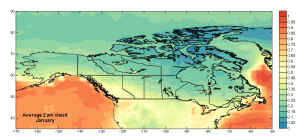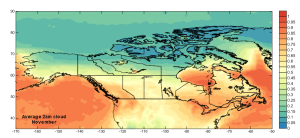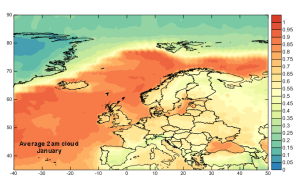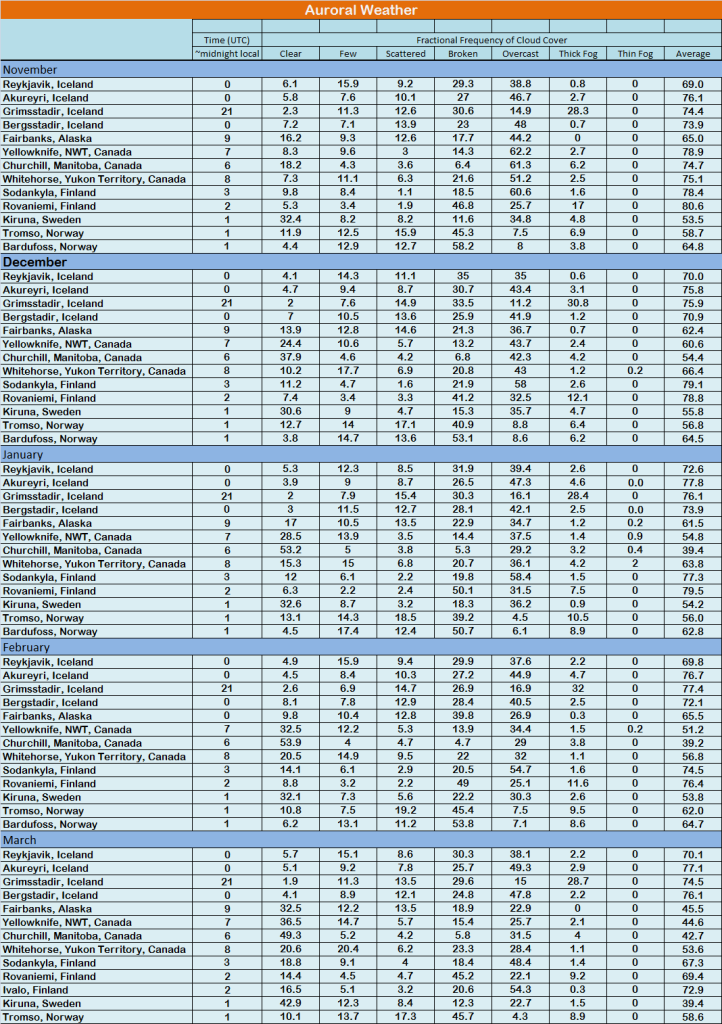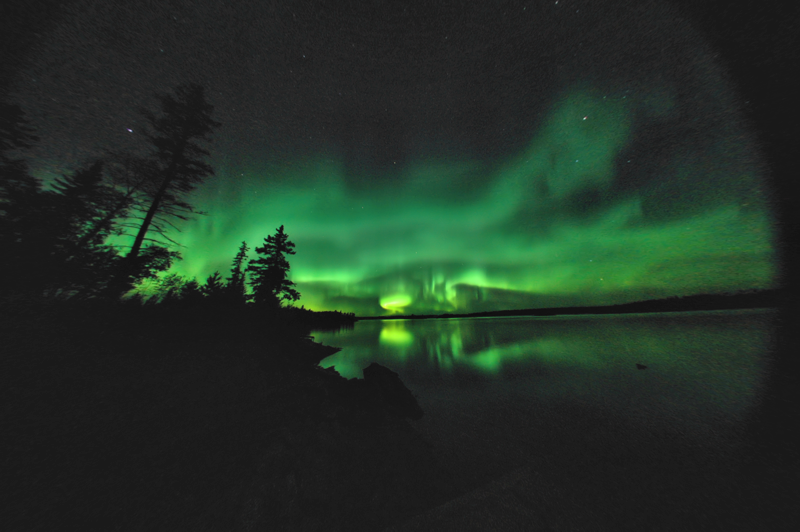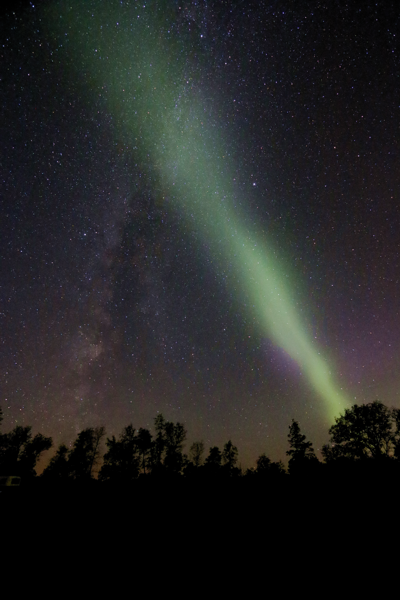
There are few events in the night that rival the magical dance of Aurora. She is a temptress, teasing in the evening with a green arc that embraces the horizon, promising more, coyly withdrawing, then flirting again. At 10, she may send out a beam of light to the zenith, and then, a moment later, covers up and stretches out across the distant trees again, snuggling low for the rest of the night. But some nights, she feels more alluring, building slowly toward midnight and then erupting in a fury of dancing lights, with brilliant-coloured curtains down low and pulsing energy-laden green and purple heartbeats aloft, high above the Dipper and the North Star. As we watch her ballet, we can not help but feel sorrow for those who stay behind in the cities, unaware of that enchanting temptress dancing in the dark skies.
Wondering where to go on an aurora-watching expedition?
The following maps display 20-year averages of satellite-measured cloud amount. The data are acquired by polar-orbiting satellites that have a nominal equator-crossing time of 2 a.m.
Cloud measurements such as these have biases caused by the difficulty of extracting a cloud signal from the infrared wavelengths that must necessarily be used at night. You will find that they don’t agree well with the data in the table, and so they should be used for making comparisons between sites rather than as an indication of the absolute probability of suitable aurora-watching skies.
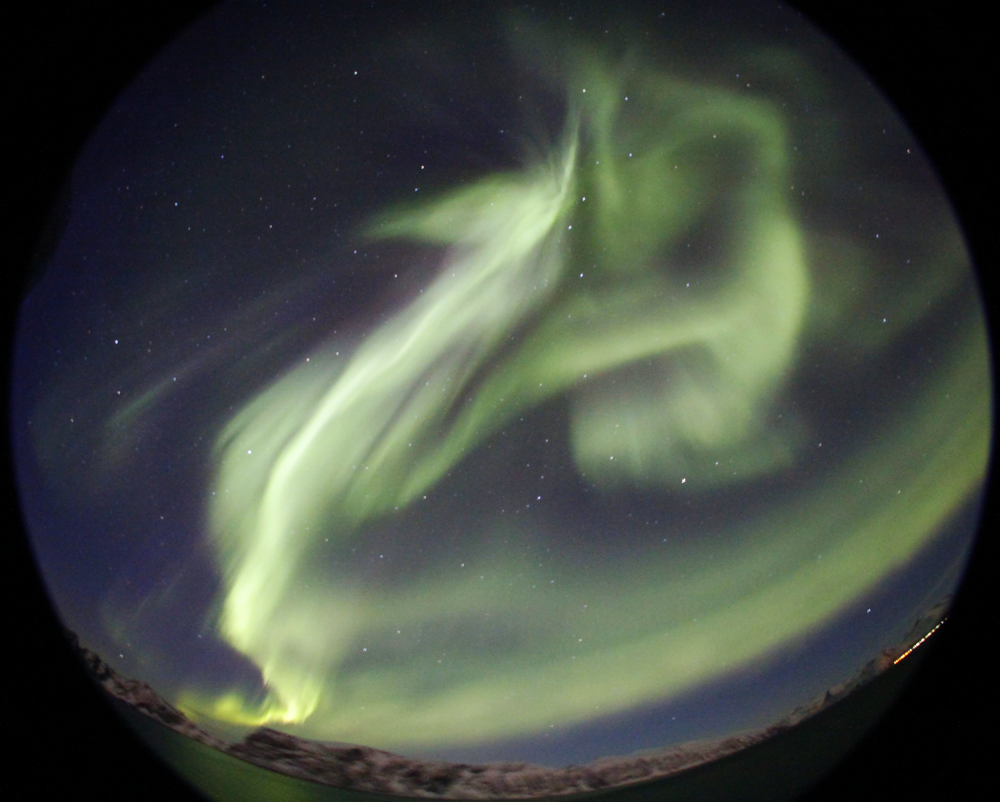
In general, inland sites in winter are sunnier than those along an open-water coast. In North America, winter locks away the moisture and weather systems tend to be forced to lower latitudes, leaving a high frequency of clear skies. In Europe, the best spots are well inland where Atlantic Ocean and Norwegian Sea moisture has difficulty reaching. November is a very cloudy month in North America, but less so in inland Sweden.
Surface-based cloud measurements are shown in the table below and are those at midnight, or close to midnight if relevant observations are missing. The “time” column is the UT hour of those measurements. All of the columns show 20 or 21-year averages, usually from 1992 to 2012. The table will help you select the best observing site with the lowest cloud cover at a particular time of year (but makes no allowances for temperature, which can be brutally cold in some locations!).

